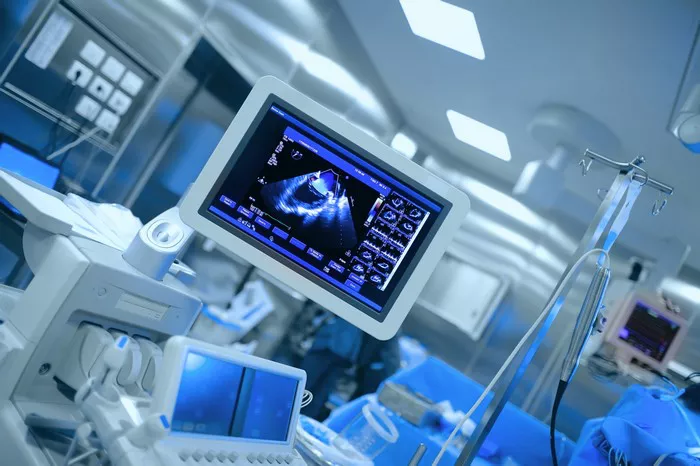Clear Explanation of Appendicitis:
Appendicitis is a medical condition characterized by the inflammation of the appendix, a small pouch-like organ attached to the large intestine. This inflammation can lead to severe abdominal pain and, if left untreated, can result in the rupture of the appendix, causing potentially life-threatening complications.
Symptoms and Causes:
The symptoms of appendicitis typically include:
Abdominal Pain: Often starting around the belly button before migrating to the lower right side of the abdomen.
Nausea and Vomiting: Especially as the pain worsens.
Loss of Appetite: Accompanied by a general feeling of malaise.
Fever: Sometimes present, indicating an infection.
The exact cause of appendicitis is not always clear, but it is believed to occur when the opening of the appendix becomes blocked, leading to bacterial overgrowth and inflammation. This blockage can be due to various factors, including:
Fecal Matter: The buildup of stool or foreign matter can obstruct the opening.
Enlarged Lymphoid Follicles: Particularly common in children and adolescents.
Tumors: Rarely, tumors in the digestive tract can cause blockages.
Treatment Options:
The primary treatment for appendicitis is surgical removal of the appendix, known as an appendectomy. There are two main approaches to this surgery:
Laparoscopic Appendectomy:
In this minimally invasive procedure, small incisions are made in the abdomen, through which a tiny camera and surgical instruments are inserted.
The surgeon then removes the appendix with precision, guided by the camera feed displayed on a monitor.
Benefits of laparoscopic surgery include smaller incisions, reduced post-operative pain, shorter hospital stays, and faster recovery times.
Open Appendectomy:
This traditional surgical approach involves making a larger incision in the lower right side of the abdomen to access and remove the appendix.
While it may be necessary in certain cases, open appendectomy generally requires a longer recovery period compared to the laparoscopic method.
Procedure:
Before the surgery, patients may undergo pre-operative procedures such as blood tests, imaging scans (like ultrasound or CT scan), and possibly bowel preparation to clear the intestines.
During the surgery, the patient is usually under general anesthesia to ensure they are unconscious and pain-free throughout the procedure. The surgeon then proceeds with either the laparoscopic or open technique to remove the inflamed appendix.
Post-operatively, patients are monitored closely for any signs of complications such as infection or bleeding. They may be given pain medication and instructed on how to care for the incision site to promote healing.
Complications and Risks:
Although appendectomy is generally considered safe, like any surgical procedure, it carries some risks. Potential complications may include:
Infection: At the surgical site or within the abdomen.
Bleeding: During or after the surgery.
Adverse Reaction to Anesthesia: Such as respiratory problems or allergic reactions.
Injury to Nearby Organs: Accidental damage to surrounding tissues or organs during surgery.
Postoperative Bowel Obstruction: Scar tissue formation that can lead to blockages in the intestines.
These risks are relatively rare, and most patients recover fully without experiencing any complications.
Antibiotics:
In rare cases where surgery is not immediately possible (such as when the patient is too ill for surgery), or when there’s uncertainty about the diagnosis, antibiotics may be prescribed to temporarily relieve symptoms and reduce inflammation. However, it’s important to note that antibiotics alone cannot cure appendicitis. Surgical removal of the appendix remains the definitive treatment.
Seeking Medical Attention:
Urgency: Appendicitis is considered a medical emergency that requires prompt treatment. If left untreated, an inflamed appendix can rupture, leading to potentially life-threatening complications such as peritonitis (infection of the abdominal cavity).
Symptoms: Immediate medical attention should be sought if experiencing:
Severe abdominal pain, especially localized to the lower right side.
Nausea and vomiting.
Fever and chills.
Loss of appetite.
Diagnosis: The diagnosis of appendicitis typically involves a combination of medical history, physical examination, and imaging tests. The healthcare provider may press on the abdomen to check for tenderness or swelling, and imaging tests such as ultrasound or CT scan may be ordered to confirm the diagnosis and assess the severity of the condition.
Emergency Room: If experiencing symptoms suggestive of appendicitis, it’s essential to seek care at an emergency room or urgent care facility promptly. Delaying treatment can increase the risk of complications and worsen the outcome.
Reassurance and Support:
Appendicitis is a common and treatable condition, with a high success rate for surgical intervention. By seeking timely medical attention, most patients can expect a full recovery without long-term consequences. It’s important to remember that early intervention is key to a positive outcome, so any concerns or symptoms should not be ignored.
Further Information:
For further information on appendicitis, its symptoms, diagnosis, and treatment options, reputable sources such as the Mayo Clinic, WebMD, or the National Institutes of Health (NIH) can provide valuable resources.
Disclaimer:
It’s crucial to emphasize that the information provided in this article is for informational purposes only and should not be used as a substitute for professional medical advice. If experiencing symptoms suggestive of appendicitis or any other medical emergency, it’s essential to seek guidance from a qualified healthcare provider promptly.
FAQs
What will a doctor do for appendicitis?
A doctor will typically perform an appendectomy, surgically removing the inflamed appendix. This procedure is the standard treatment for appendicitis to prevent complications like rupture, which can be life-threatening.
Can doctors treat appendicitis without surgery?
Doctors sometimes use antibiotics to treat mild cases of appendicitis, especially if surgery poses risks. However, this approach isn’t universal, and surgery remains the primary treatment, particularly for severe cases or complications.
How quickly must appendicitis be treated?
Appendicitis should be treated promptly to prevent complications like a ruptured appendix, which can lead to severe infection and even death. Generally, surgery is performed as soon as possible after diagnosis, usually within 24 hours, to minimize risks and ensure a speedy recovery.
Related topics:
- Understanding Pancreatitis Pain: How Long Does It Last?
- Understanding Pancreatitis Attack: What to Do
- Pancreatitis Fever How Long?


